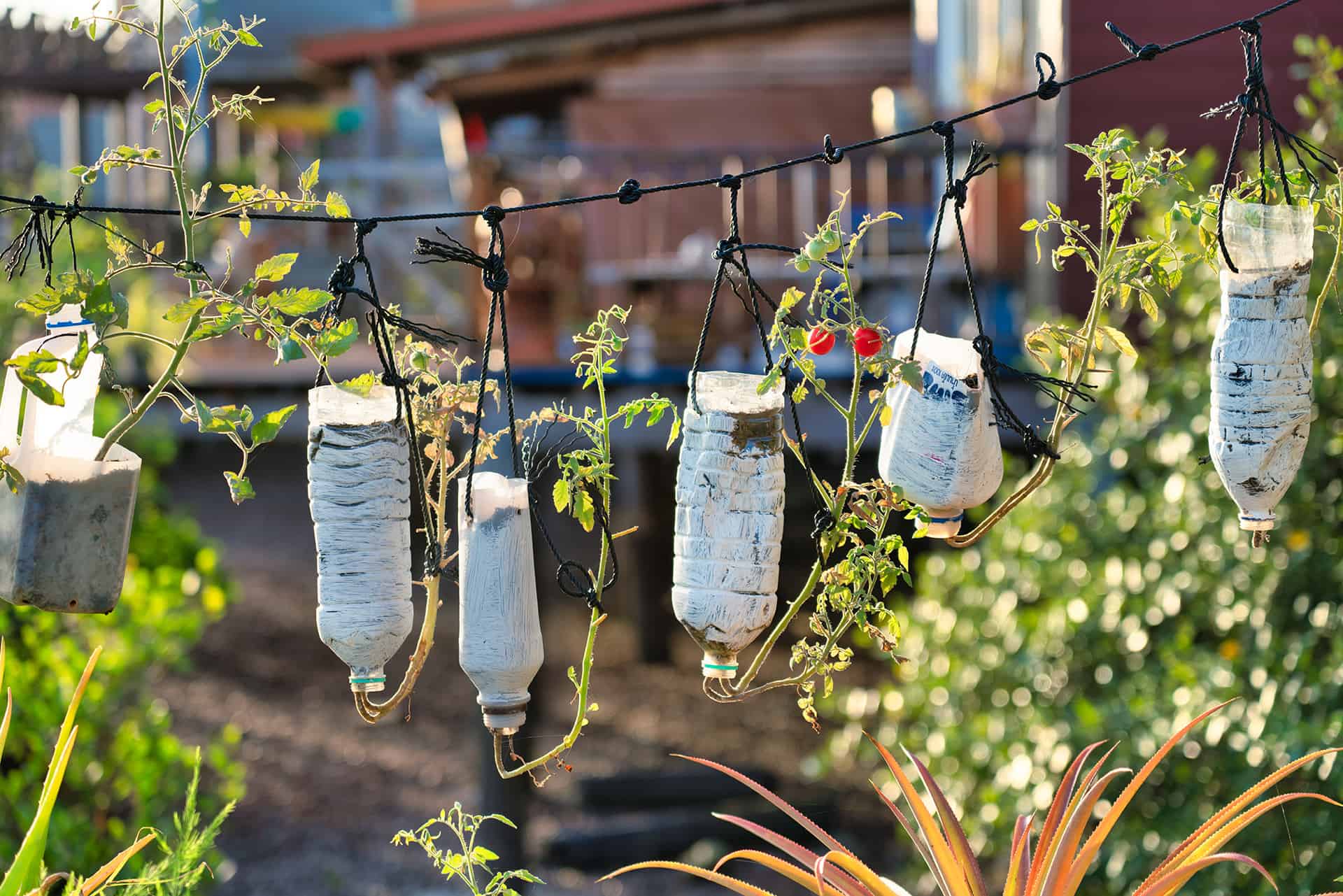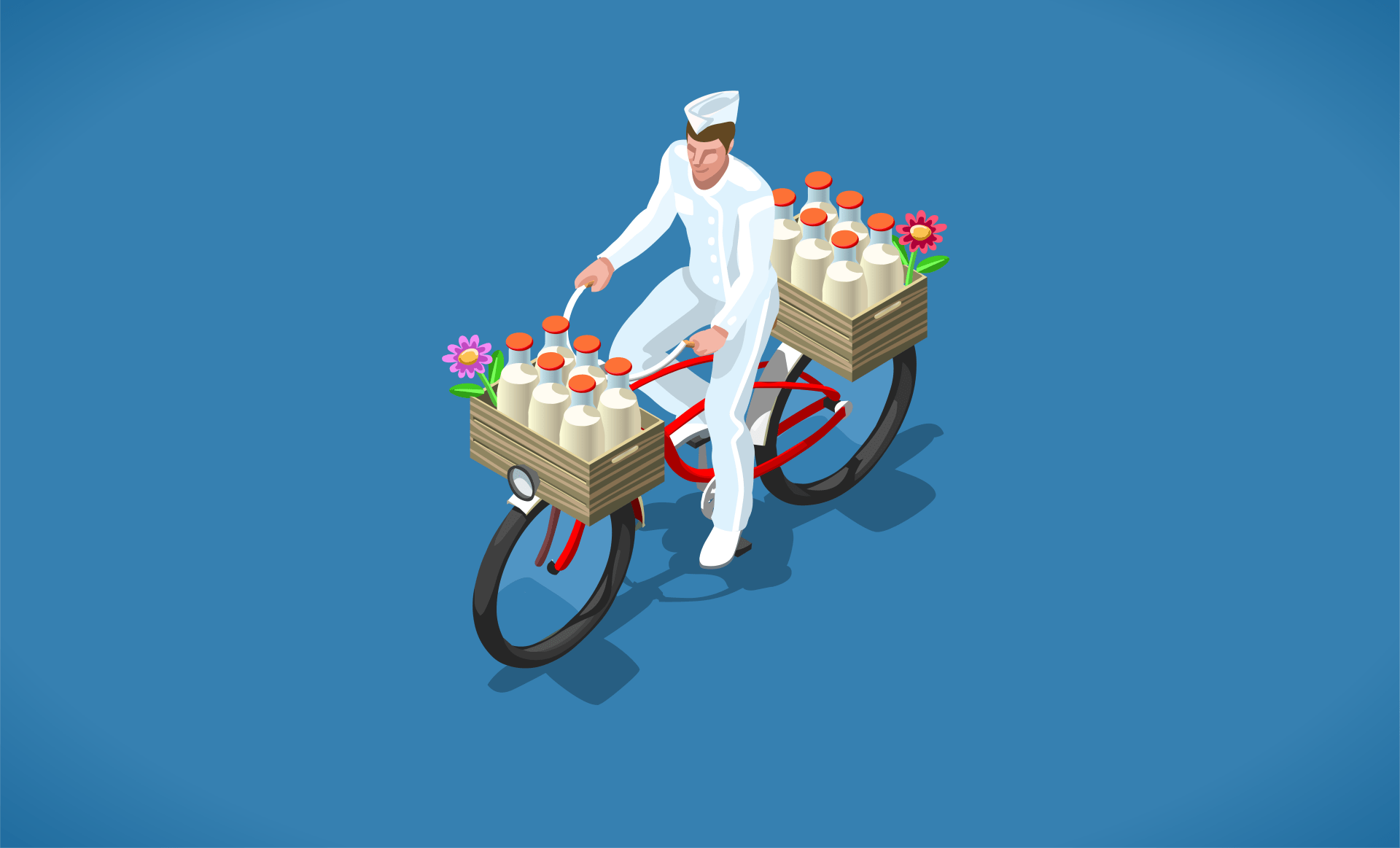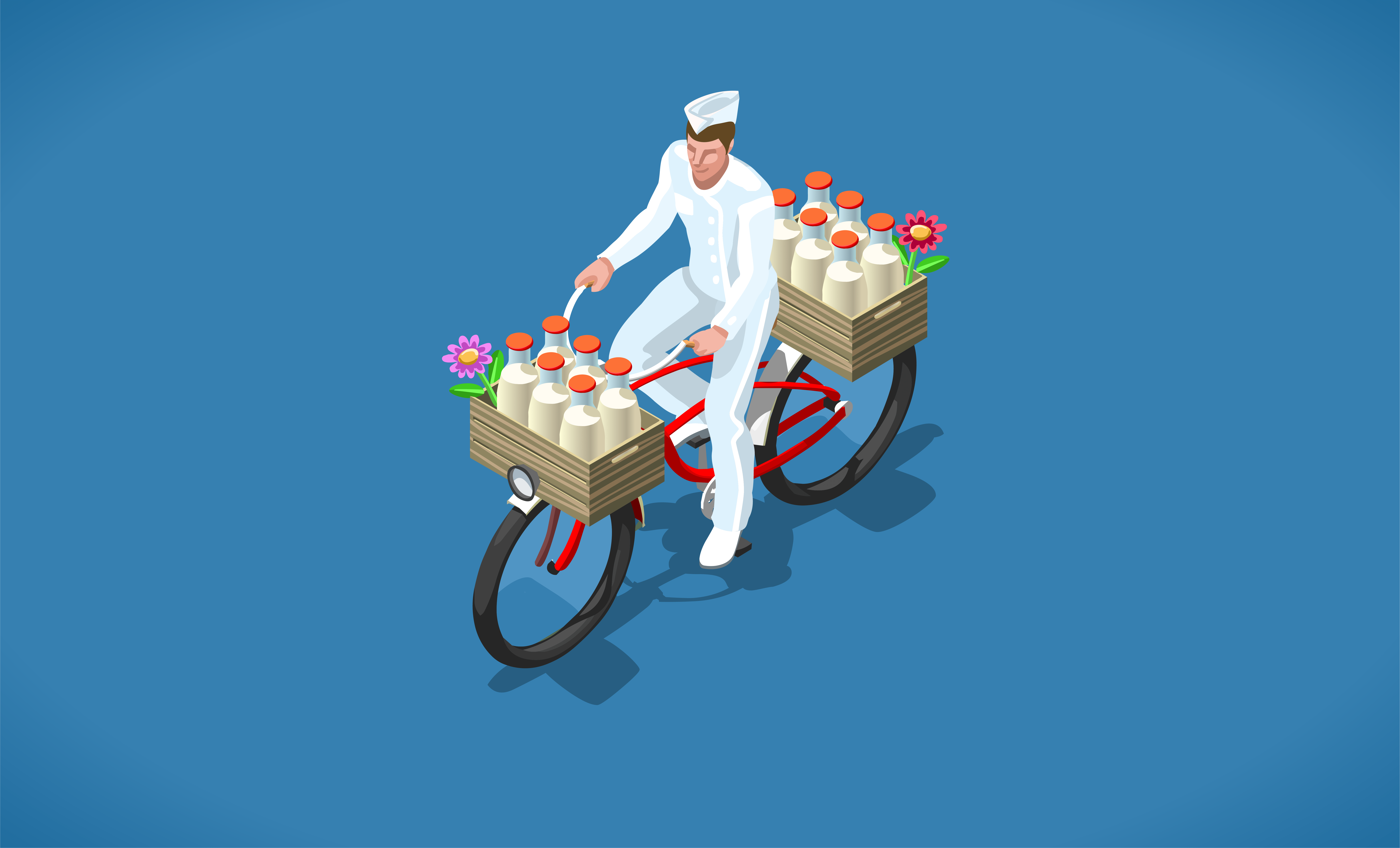“Whatever happened to predictability, the milkman, the paperboy, evening tv?” This familiar line from the opening song in Full House contemplates change in culture, technology, and consumerism. Written in the late 80s, the question remains today as we ponder the enterprises of the past. Some of which, like the milkman, might even return in the future.

As production of goods and services increases around the world, and as consumer culture focuses on individualism, low cost, and ease of access, waste seems to be increasing. Today’s consumers are left always wanting more while the environment seems to have had its fill of energy and waste that it takes to keep us on the search for more. The COVID-19 pandemic has further emphasized these trends. Folks are buying and shopping online more than ever, having products delivered on demand and all for little financial cost while making a huge environmental impact.
Inspiring new enterprises, such as TerraCycle’s Loop or Mirume’s Morning Tea in Japan, seek to satisfy both demands, more for the consumer and less for the earth. These are just two examples of how businesses are striving to reduce waste to zero through the notion of “circular shopping”. Consumers partnering with Loop are able to purchase grocery products that are delivered in reusable containers. Once finished, the empty containers are picked up and new, fresh product is provided. This “milkman method” ensures that very little waste is produced in acquiring, consuming, and discarding the product. Mirume’s Morning Tea method is similar, except the pick-up and delivery is the consumer’s responsibility. For example, one can purchase a bottle of tea on his walk to work in the morning, then return the empty, reusable container on the way home, eliminating any waste in the process.
These “milkman methods” may seem a bit outdated but are very efficient when it comes to waste. The construction industry is also pursuing strategies to lower waste, minimize carbon footprint, and reduce the general consumption of energy and materials. One such strategy is the lowering of “embodied carbon”, which is the sum of CO2 emissions within the full lifecycle of a building or structure. This includes emissions during the manufacture and transportation of materials, construction of the building, usage of the space over its lifetime, and the demolition or repurposing of the infrastructure. Lowering this number will improve the health of people and the environment.

Processes like upcycling help control waste and pollution across our planet and significantly impact our communities, and repurposing what would otherwise be discarded is a cost-efficient way of realizing sustainable design. Consider the Rural Studio Architectural program of Auburn University, a hands-on architectural experience that teaches students “to address the ethical responsibility for the social, political, and environmental consequences of what they design and build.” Students provide infrastructure (parks, homes, facilities) to meet the specific social and physical needs of under resourced communities in rural Alabama, creating designs that oftentimes, in whole or in part, are constructed using recycled materials. The goal of the program is not to question what can be built, but to discover what should be built.
If we don’t curb the rate at which we consume and waste resources, we might find ourselves in a dire situation. According to Feeding America (www.feedingamerica.org), up to 40% of all food in the USA is wasted. We are familiar with the push-button-receive-product consumer culture, so we should, and must, be able to adopt similar sustainable solutions. How far could we reduce our planet’s waste if we employ circular product systems on a wider scale, consuming with the end in mind? Opportunities to partner with circular systems are certainly there for the taking – a little adjustment is all it would require. Think about it, what did ever happen to the milkman? And might we see him again in the near future?

